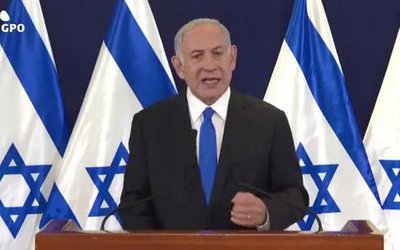It was on Maghe Sangranti day that the Minister for Education, Science and Technology submitted a report prepared by a high level national education committee, headed by the member secretary of the University Grants commission to the PM. The report has set restrictions on the new colleges until the provincial and federal structures and regulations presumably are fixed. The idea is for a whole reorganisation of the educational sector. Currently it is neither ‘Hanseko chal na Kukhurako chal’ as far as educational institutions in this country are concerned. One pertinent issue that needs to be addressed and sorted out is whether institutions should be on regional, read provincial basis or on faculty basis depending on what they teach / instruct on. There is an ongoing debate on a central medical university and on how many colleges a university should affiliate. Now is the time to make the medical ‘Deemed Universities’ into full fledged ones and be allowed to function within their spheres of influence.
Our PM in his wisdom has rightly said that students should not be forced to study matters which they are not interested in and pronounced as failures but be encouraged develop their areas of interest. This calls for a total review of our educational system and perhaps for some form of apprenticeship in the process of choosing ones career for the future. There is current dissatisfaction with the educational system not only in Nepal but also in countries such as India and USA. Ironically, subjects no longer relevant are still being taught. The question is whether we want people with skills who can perform or persons with degrees who can’t function?
In earlier times individual initiatives had started some colleges in different parts of Nepal. Academic activities accelerated when a number of Nepali scholars sent to the University of Oregon in USA to be trained as teachers returned back. The institution at Chet Bhawan was then started.
Then on a cold and rainy day the two queens of King Tribhuvan laid the foundation stone of Tribhuvan University (TU). A number of elderly Nepalis still remember marching all the way to Kirtipur on the occasion. Following this, a number of institutions were affiliated and integrated in this set up irrespective whether the private parties wanted it or not.
Later King Mahendra started the Sanskrit University bearing his name. It is now just Sanskrit but would be better to call it Sanskriti University and include for further studies other areas of Art and Fine Arts under its jurisdiction. Further studies in the various ethnic languages and culture could be part of it.
At this juncture the National Education System Plan (NESP) of 1972 which tried to modernise the system by introducing semesters and making it compulsory for students pursuing graduate study to go and spend a year in different parts of the country. With ‘Diploma courses’ in the forefront the whole concept was challenged, student’s unions of the Right, Left and Centre were formed and students took to the streets on various issues. Things took a political turn and the whole system was discredited.
It was perhaps to tackle this that Private Campuses were allowed in TU. There was in those early days the thought that there should be a Technical University, and a Purbanchal and Paschimanchal University with Mahendra Morang and Prithvi Narayan Campuses being the base. The irony is that these universities have been set up ignoring this initial concept and TU continues to be huge, wieldy and unmanageable. A recent announcement that a Man Mohan Technical University is contemplated in Province One is welcome news. Hopefully they will be laying stress on and providing vocational training as a large number of Nepalis are presently going to many parts of the world as unskilled or semi-skilled workers. Hopefully this institution will reverse this trend.
The current number of Universities stands at 10 of which the six accredited are TU, KU, Sanskrit U, Purbanchal, Pokhara and Mid Western. Others are the Lumbini Buddhist, Agriculture & Forestry and the Open University. Rajarshi Janak at Janakpur Dham is in process of becoming one. There are four medical deemed universities at Dharan, Karnali, Patan, Pokhara and NAMS at Kathmandu. The government has stated that it will have a Central Medical University and an Academy of Health Sciences at each of the seven Provinces.
The last two decades has seen a plethora of colleges, mostly IT ones which have sprung up like mushrooms all over the country, which in this modern age is the call of the times. The present government has also come forward with a scheme of education for Nepal. All this is in the context of a ‘Private and Public Mix’ which has been the call up of both the Health and Education Sectors.
Dr. Govinda KC campaign has been about medical colleges. He has however also insisted that CTEVT should not now be running programmes of health sector below twelve years of education and producing health sector manpower of dubious standards.
The reality still is that quality education is not being given by many state funded institutions affiliated to Universities. As a previous VC of TU remarked, “Many teachers are more sincere to these institutions than to TU which pays the major part of what they earn every month.” A very devastating fact is that Thesis of Masters and PhD levels are being manufactured and sold by photocopy shops just outside many centres of learning.
The pertinent question now is what sort of a system of education should be established in this country? Should education up to 12 years be totally free? Should it be like the Finnish system where there is no specific curriculum with students choosing what they want to learn and teachers oblige? Should we have an ‘Apprentice Type’ of system as in many parts of Europe where the students learn the trade of their choice? Should graduate studies be expensive as in the Community Colleges or the Universities of USA or should these be relatively costless as in many parts of Europe. With memories of the 10th February Shree /Basanta Panchami fresh in our minds these pertinent questions need to be seriously considered before we in Nepal choose the way forward.

Hemang Dixit
The author writes fiction under the name of Mani Dixit. Website: www.hdixit.org.np. Twitter: @manidixithd
- Top Heavy
- Sep 20, 2023
- Most Able?
- Sep 04, 2023
- Changing Times
- Aug 21, 2023
- Nepali Shenanigans
- Aug 03, 2023
- Budget Naataks
- Jun 29, 2023















